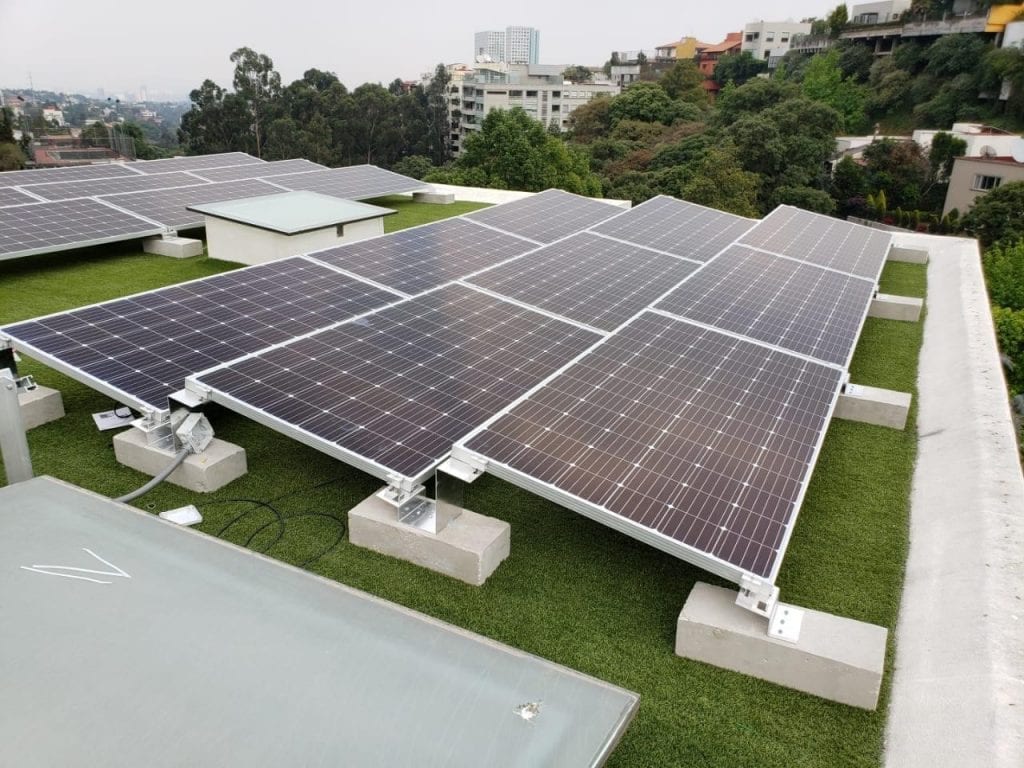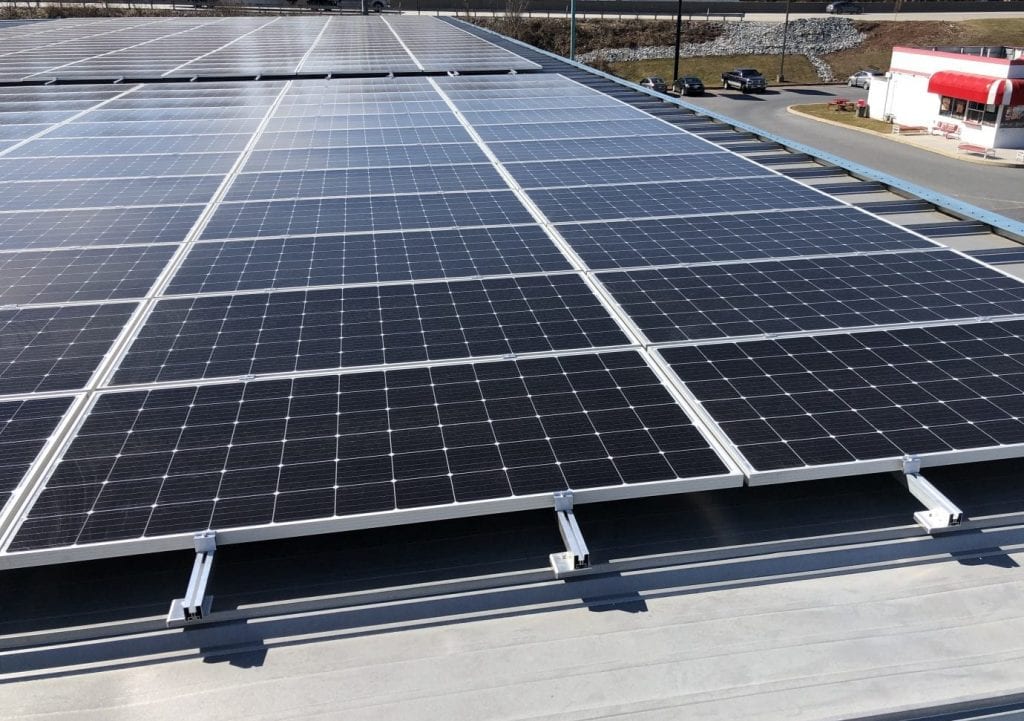What are the different types of solar mounting systems?
By now you have a good understanding of what a solar panel is and how a solar photovoltaic system functions. We've seen solar panels mounted on roofs, but may wonder how the systems are mounted.
Before solar panels can be installed onto your rooftop, you will need to know what the available solar mounting options are.
A solar mounting system is a component that secures solar panels to your roof and holds them in place. Let’s discover the different solar racking systems available and how to choose the right mounting system for your solar installation.
We can differentiate options based on the roof type. Let’s take a look at some of the options for flat rooftops.
Rail-based mounting system
Firstly, a rail-based mounting system is used for flat roofs. The rails are secured to the roof using a bolt or screw with flashing installed. Each solar panel is then attached to the rail.
At KB Racking, we offer AeroRack 2.0 as a rail-based mounting solution. The AeroRack 2.0 system provides customers with core elements of integrated wire management and simple installation, at a more economical price. Our rail-based design provides stiffness, reducing ballast requirements and roof loads. The system offers customizable solutions with its flexibility in panel orientation, row spacing, and tilt angle.

Ballasted mounting system
Secondly, this system is mainly used for flat-roof mounting systems and is the most common, and widely used system. Using weights i.e. ballasts, on top of the mounting system acts as a support and holds the solar panels in place, which makes it very efficient and easy to install.
Our most popular system, EkonoRack 2.0 is a non-penetrating solar mounting solution that uses ballasts. The EkonoRack 2.0’s innovative design acts as a tray for the ballasts, ensuring the ballasts stay in place. The advantages of this system are that you don’t need penetrations, requirements minimal components and are cost-effective.

Anchored mounting system
Thirdly, an anchored mounting system eliminates the use of ballasts and is most popular with rooftops that have weight constraints. Wood screws are used to penetrate the roof surface to create a secure attachment against high wind loads. Also, high-grade flashing allows for a permanent seal against the elements.

Before installing a mounting system on a rooftop, it’s important to check and inspect the roof. Evaluating the condition and structure of the roof is important to determine the integrity and these are the necessary steps needed prior to installation.
Let’s go over some of the sloped roof recommendations and mounting options available.
Residential roof
Shingle roof:
Most residential roofs are made with shingles, making them very easy to work with. Keep in mind, flashing is essential to ensure there are no water leaks or electricity grounding hazards.
Our ReziRack 2.0 is an innovative shingle roof solar mounting solution, designed for use with both as a fully-railed and shared-rail mounting configurations.
In addition, the mounting system uses industry-leading flashing products, promoting rapid installation while forming a rugged solar mounting platform.
Tile roof:
Mounting solar panels on tile roofs may require additional labor as tiles will need to be removed, installing the mounting and flashing. Extra time will be vital to drill through the tiles and tread them carefully.
Spanish tile roofs are the most expensive type to install solar panels on. The reason is that installers have no choice but to walk on them and some will break along the installation process. It’s recommended for installers to spend as little time as possible on the roof.
Standing-seam mounting system:
Standing-seam metal roofs are the most convenient roof typeand are great for solar installations. They are the easiest to install as theyrequire no penetration to the roof and provide convenient attachments to thepanel with solar mounting clamps.
The longevity and ease-of-use make standing-seam metal roofs the perfect roof for solar panels.

Corrugated roof mounting system
A corrugated metal roof is most commonly seen on agricultural structures such as barns. A metal roof is a challenge for installers as the roof may not be strong enough to support the mounting system. Additional mounting attachments are required to penetrate and secure the mounting system to the roof. To prevent water damage, it’s important for the system to be surrounded by flashing and leak-proof components.
Fully-railed system or Shared-rail system
For a rail-based mounting system, there are two available options depending on the roof type as well as preference.
The difference between a shared-rail and fully-railed system lies in the number of rails needed for the installation. For a fully-railed system, two rows of rails are required for each module of panels.
A shared-rail system requires two rows of rails for each row of solar panels, and every two panels will share a middle rail. This means only three rails are necessary and fewer bolts and/or screws will be installed into the roof. Installation costs and overall time to install are cut down by using the shared-rail technique.

Rail-less mounting system
Instead of attaching to rails, solar panels attach directly to hardware connected to the bolts/screws going into the roof. The frame of the solar panel is rail-less.
In addition, rail-less systems still need the same number of attachments into the roof as a railed system. Removing the rails reduces manufacturing and shipping costs, and having fewer components speeds up install time.
Flush roof mounting system
With this mounting system, solar panels are flushed with theroof. The design protects the roof as well as the panels, providing 2 to 4inches between the roof and the bottom of the panel. Here, you’ll get air flowto the underside of the panel while reducing wind load. Pros: You usually don’tneed penetrations.
This system reduces the dead load on your roof. The arrangement works with a sloped roof. The materials are suitable for areas that experience high winds.
Now that we’ve covered a wide range of solar mounting techniques, which mounting system is the best suitable for your rooftop?
For more information, visit us at www.kbracking.com or contact one of our sales representatives to install your solar PV system today!
